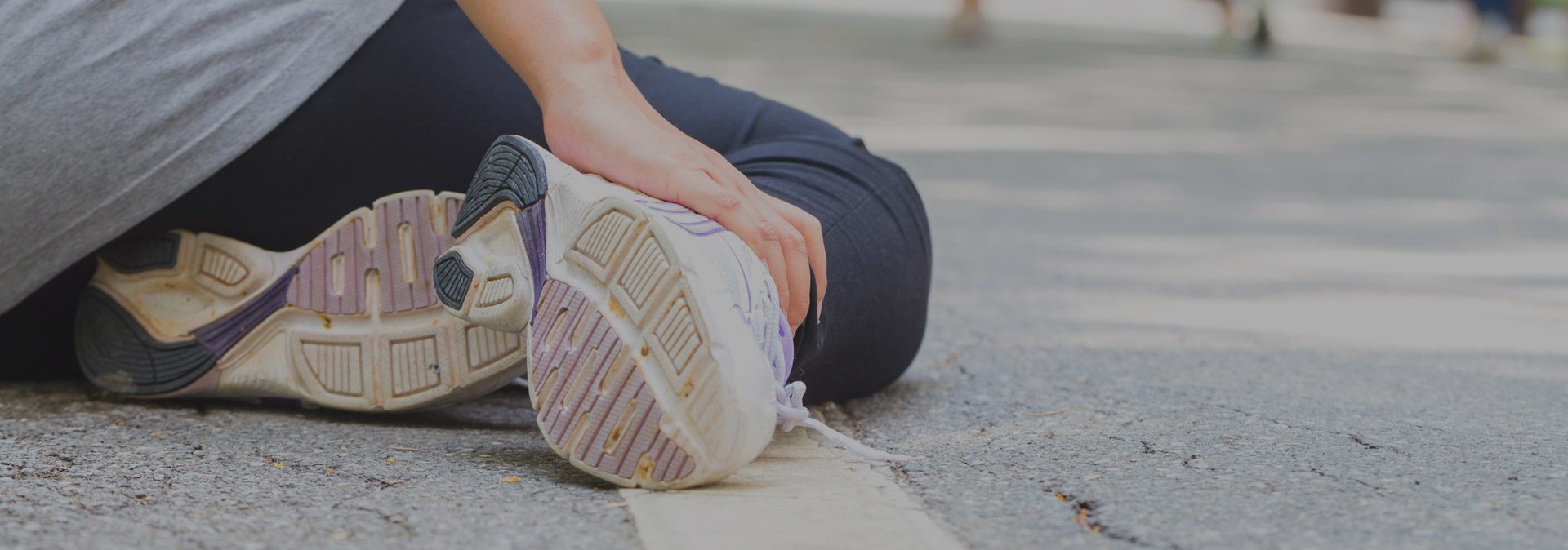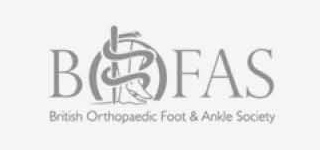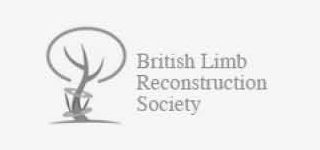A guide to Foot & Ankle Conditions
The human foot and ankle is one of the most amazing examples of biomechanical engineering in nature. Comprising 26 bones, over 30 joints and more than 100 muscles, tendons and ligaments, it is a highly complex and specialised structure very similar to our hands but much stronger and less flexible. Our feet enable us to stand, balance, walk, run, jump, climb and swim and are constantly subjected to very high loads, stresses and demands, not to mention being forced into a variety of different shaped footwear. Given the daily abuse suffered by our feet, there are numerous problems they can suffer, and because of the time we spend on our feet and the loads they are constantly bearing, even the most minor foot problem can be severely painful or debilitating.
I treat all Foot & Ankle conditions from the simple to the very complex. The most commonly encountered problems which I am asked to treat are listed here:
CONDITIONS
Arthritis
Arthritis is a disease process where there is progressive degeneration or wearing out of the cartilage within a joint. As a result, the bones begin to grind against each other and the whole joint becomes inflamed, painful and stiff. The process may simply develop out of the blue, or may be triggered by another event such as trauma or infection. The joint most commonly affected in the foot is the joint at the base of the big toe, although any joint can be affected. When non-surgical treatments such as orthotics or steroid injections no longer help, then surgery may be of benefit. This may be to tidy up the joint, remove bone spurs, realign the joint, replace the joint or fuse it depending on the situation.
Fractures
A fracture is a break in a bone, and usually results following a traumatic incident. The majority of fractures do not require surgery. We have, after all, evolved over thousands of years to survive and heal following injury. However, where a fracture is particularly unstable, compromises future function, or would require an unacceptably long time to heal by itself, then surgical fixation may be indicated. I can offer fracture fixation surgery when appropriate for almost all fractures.
Bunions (Hallux valgus)
A bunion is a bump around the joint at the base of the big toe. It is usually due to a condition called Hallux valgus, in which there is deviation of the toe alignment at this joint, and the big toe points toward the smaller toes. Sometimes it is due to arthritis. When a bunion is particularly painful or troublesome and not responding to non-surgical treatment, then surgery may be considered. The nature of the surgery required depends on the exact nature of the bunion, and may involve either simply removing the bunion bump, realigning the toe, or in some cases even fusing the base of the toe. Often the surgery is combined with procedures to address associated problems with the other toes.
Achilles Tendon
The Achilles tendon is the largest tendon in the body and plays a crucial role in propulsion during walking, running and jumping. Tears, ruptures or inflammation of this tendon can be extremely debilitating. There are many non-operative as well as surgical treatment options available.
Sports Injuries
The commonest sports injuries I am asked to treat are ankle injuries. Pain and instability are common symptoms in these cases and usually due to damage to ligaments, tendons, or sometimes even the cartilage surfaces within a joint. The treatment required depends on the exact nature of the injury, and tests such as ultrasound or MRI scans can be helpful in confirming the complete diagnosis.
Hallux Rigidus (arthritis of 1st MTP joint)
Arthritis of the joint at the base of the toe is termed Hallux rigidus, which translates as stiff big toe. As the cartilage within the joint wears out, the bones grind against each other causing pain and swelling. Bone spurs develop around the margins of the joint causing further swelling, and blocking movements of the joint. Depending on the severity of the condition, numerous treatment options are available including injections, cheilectomy, synthetic cartilage implants or fusion.
Deformity
The most commonly complained about deformities which I treat, not including bunions, are:
- Lesser toe deformity (Hammer toes/ claw toes/ curly toes)
- Flat foot (pes planus)
- High arched foot (pes cavus)
- Other adult limb deformity, such as bowed or shortened legs following badly healed fractures
Neuromas
Interdigital neuromas (commonly called Morton's neuromas) are a common cause of forefoot pain and are often part of a generalised forefoot overload condition with associated bursitis and metatarsalgia. The neuroma itself is a painful swelling and inflammation of a small nerve near the webspace between toes. The most commonly affected webspace is that between the 3rd and 4th toes, but any webspace can be affected. The diagnosis is usually confirmed with Ultrasound scan and initial treatment is non-operative with footwear and lifestyle advice plus use of orthotics. Steroid injections are helpful for some people. Where non-operative management fails, surgery can be undertaken to remove the painful neuroma.
Arthritis is a disease process where there is progressive degeneration or wearing out of the cartilage within a joint. As a result, the bones begin to grind against each other and the whole joint becomes inflamed, painful and stiff. The process may simply develop out of the blue, or may be triggered by another event such as trauma or infection. The joint most commonly affected in the foot is the joint at the base of the big toe, although any joint can be affected. When non-surgical treatments such as orthotics or steroid injections no longer help, then surgery may be of benefit. This may be to tidy up the joint, remove bone spurs, realign the joint, replace the joint or fuse it depending on the situation.
A fracture is a break in a bone, and usually results following a traumatic incident. The majority of fractures do not require surgery. We have, after all, evolved over thousands of years to survive and heal following injury. However, where a fracture is particularly unstable, compromises future function, or would require an unacceptably long time to heal by itself, then surgical fixation may be indicated. I can offer fracture fixation surgery when appropriate for almost all fractures.
Bunions (Hallux valgus)
A bunion is a bump around the joint at the base of the big toe. It is usually due to a condition called Hallux valgus, in which there is deviation of the toe alignment at this joint, and the big toe points toward the smaller toes. Sometimes it is due to arthritis. When a bunion is particularly painful or troublesome and not responding to non-surgical treatment, then surgery may be considered. The nature of the surgery required depends on the exact nature of the bunion, and may involve either simply removing the bunion bump, realigning the toe, or in some cases even fusing the base of the toe. Often the surgery is combined with procedures to address associated problems with the other toes.
Achilles Tendon
The Achilles tendon is the largest tendon in the body and plays a crucial role in propulsion during walking, running and jumping. Tears, ruptures or inflammation of this tendon can be extremely debilitating. There are many non-operative as well as surgical treatment options available.
Sports Injuries
The commonest sports injuries I am asked to treat are ankle injuries. Pain and instability are common symptoms in these cases and usually due to damage to ligaments, tendons, or sometimes even the cartilage surfaces within a joint. The treatment required depends on the exact nature of the injury, and tests such as ultrasound or MRI scans can be helpful in confirming the complete diagnosis.
Hallux Rigidus (arthritis of 1st MTP joint)
Arthritis of the joint at the base of the toe is termed Hallux rigidus, which translates as stiff big toe. As the cartilage within the joint wears out, the bones grind against each other causing pain and swelling. Bone spurs develop around the margins of the joint causing further swelling, and blocking movements of the joint. Depending on the severity of the condition, numerous treatment options are available including injections, cheilectomy, synthetic cartilage implants or fusion.
Deformity
The most commonly complained about deformities which I treat, not including bunions, are:
- Lesser toe deformity (Hammer toes/ claw toes/ curly toes)
- Flat foot (pes planus)
- High arched foot (pes cavus)
- Other adult limb deformity, such as bowed or shortened legs following badly healed fractures
Neuromas
Interdigital neuromas (commonly called Morton's neuromas) are a common cause of forefoot pain and are often part of a generalised forefoot overload condition with associated bursitis and metatarsalgia. The neuroma itself is a painful swelling and inflammation of a small nerve near the webspace between toes. The most commonly affected webspace is that between the 3rd and 4th toes, but any webspace can be affected. The diagnosis is usually confirmed with Ultrasound scan and initial treatment is non-operative with footwear and lifestyle advice plus use of orthotics. Steroid injections are helpful for some people. Where non-operative management fails, surgery can be undertaken to remove the painful neuroma.
A bunion is a bump around the joint at the base of the big toe. It is usually due to a condition called Hallux valgus, in which there is deviation of the toe alignment at this joint, and the big toe points toward the smaller toes. Sometimes it is due to arthritis. When a bunion is particularly painful or troublesome and not responding to non-surgical treatment, then surgery may be considered. The nature of the surgery required depends on the exact nature of the bunion, and may involve either simply removing the bunion bump, realigning the toe, or in some cases even fusing the base of the toe. Often the surgery is combined with procedures to address associated problems with the other toes.
The Achilles tendon is the largest tendon in the body and plays a crucial role in propulsion during walking, running and jumping. Tears, ruptures or inflammation of this tendon can be extremely debilitating. There are many non-operative as well as surgical treatment options available.
Sports Injuries
The commonest sports injuries I am asked to treat are ankle injuries. Pain and instability are common symptoms in these cases and usually due to damage to ligaments, tendons, or sometimes even the cartilage surfaces within a joint. The treatment required depends on the exact nature of the injury, and tests such as ultrasound or MRI scans can be helpful in confirming the complete diagnosis.
Hallux Rigidus (arthritis of 1st MTP joint)
Arthritis of the joint at the base of the toe is termed Hallux rigidus, which translates as stiff big toe. As the cartilage within the joint wears out, the bones grind against each other causing pain and swelling. Bone spurs develop around the margins of the joint causing further swelling, and blocking movements of the joint. Depending on the severity of the condition, numerous treatment options are available including injections, cheilectomy, synthetic cartilage implants or fusion.
Deformity
The most commonly complained about deformities which I treat, not including bunions, are:
- Lesser toe deformity (Hammer toes/ claw toes/ curly toes)
- Flat foot (pes planus)
- High arched foot (pes cavus)
- Other adult limb deformity, such as bowed or shortened legs following badly healed fractures
Neuromas
Interdigital neuromas (commonly called Morton's neuromas) are a common cause of forefoot pain and are often part of a generalised forefoot overload condition with associated bursitis and metatarsalgia. The neuroma itself is a painful swelling and inflammation of a small nerve near the webspace between toes. The most commonly affected webspace is that between the 3rd and 4th toes, but any webspace can be affected. The diagnosis is usually confirmed with Ultrasound scan and initial treatment is non-operative with footwear and lifestyle advice plus use of orthotics. Steroid injections are helpful for some people. Where non-operative management fails, surgery can be undertaken to remove the painful neuroma.
The commonest sports injuries I am asked to treat are ankle injuries. Pain and instability are common symptoms in these cases and usually due to damage to ligaments, tendons, or sometimes even the cartilage surfaces within a joint. The treatment required depends on the exact nature of the injury, and tests such as ultrasound or MRI scans can be helpful in confirming the complete diagnosis.
Arthritis of the joint at the base of the toe is termed Hallux rigidus, which translates as stiff big toe. As the cartilage within the joint wears out, the bones grind against each other causing pain and swelling. Bone spurs develop around the margins of the joint causing further swelling, and blocking movements of the joint. Depending on the severity of the condition, numerous treatment options are available including injections, cheilectomy, synthetic cartilage implants or fusion.
Deformity
The most commonly complained about deformities which I treat, not including bunions, are:
- Lesser toe deformity (Hammer toes/ claw toes/ curly toes)
- Flat foot (pes planus)
- High arched foot (pes cavus)
- Other adult limb deformity, such as bowed or shortened legs following badly healed fractures
Neuromas
Interdigital neuromas (commonly called Morton's neuromas) are a common cause of forefoot pain and are often part of a generalised forefoot overload condition with associated bursitis and metatarsalgia. The neuroma itself is a painful swelling and inflammation of a small nerve near the webspace between toes. The most commonly affected webspace is that between the 3rd and 4th toes, but any webspace can be affected. The diagnosis is usually confirmed with Ultrasound scan and initial treatment is non-operative with footwear and lifestyle advice plus use of orthotics. Steroid injections are helpful for some people. Where non-operative management fails, surgery can be undertaken to remove the painful neuroma.
The most commonly complained about deformities which I treat, not including bunions, are: - Lesser toe deformity (Hammer toes/ claw toes/ curly toes) - Flat foot (pes planus) - High arched foot (pes cavus) - Other adult limb deformity, such as bowed or shortened legs following badly healed fractures
Interdigital neuromas (commonly called Morton's neuromas) are a common cause of forefoot pain and are often part of a generalised forefoot overload condition with associated bursitis and metatarsalgia. The neuroma itself is a painful swelling and inflammation of a small nerve near the webspace between toes. The most commonly affected webspace is that between the 3rd and 4th toes, but any webspace can be affected. The diagnosis is usually confirmed with Ultrasound scan and initial treatment is non-operative with footwear and lifestyle advice plus use of orthotics. Steroid injections are helpful for some people. Where non-operative management fails, surgery can be undertaken to remove the painful neuroma.
If you would like to arrange a consulation or appointment please contact my private secretary on:






